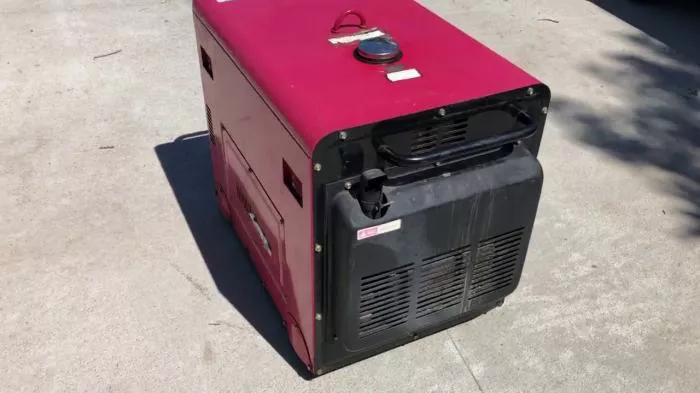Understanding how a diesel generator starts involves delving into the essential processes and components that contribute to its operation. Diesel generators are widely used for their reliability and efficiency in providing backup power. Here’s an in-depth look at the starting process of a diesel generator, including the critical components and steps involved.
1. Overview of Diesel Generator Starting Process
A diesel generator’s starting process includes several crucial steps and components working together to ignite the diesel fuel and initiate the generator’s operation. The primary components involved are the battery, starter motor, fuel system, and control panel.
2. Key Components of the Starting System
2.1 Battery
The battery plays a vital role by providing the necessary electrical power to start the generator. It supplies energy to the starter motor and other electrical components required for the initial ignition of the engine. A fully charged and well-maintained battery is essential for reliable starting.
2.2 Starter Motor
The starter motor is responsible for cranking the engine. When the starting switch is activated, the starter motor engages with the engine’s flywheel, turning it over and initiating the combustion cycle. A properly functioning starter motor is crucial for the generator’s successful start.
2.3 Fuel System
The fuel system includes the fuel pump, fuel filters, and fuel injectors. The fuel pump delivers diesel fuel from the tank to the injectors, which then spray the fuel into the combustion chamber. A well-maintained fuel system ensures the efficient delivery of fuel needed for ignition.
2.4 Control Panel
The control panel houses various controls and indicators, such as the start button, ignition switch, and monitoring gauges. It allows the operator to initiate the starting sequence and monitor the generator’s status. Proper functioning of the control panel is essential for successful startup and operation.
3. Diesel Generator Starting Procedure
3.1 Initial Preparation
Before starting the diesel generator, several preliminary checks are essential. First, ensure that there is an adequate amount of diesel fuel in the tank. Next, verify that the battery is fully charged and in good condition. Additionally, check the oil and coolant levels to confirm they are within the recommended ranges.
3.2 Starting the Generator
Begin by turning on the main switch or control panel. This action powers up the generator’s electrical systems and prepares the unit for starting. Next, press the start button or turn the ignition switch to initiate the starting process. This action sends an electrical signal to the starter motor.
The starter motor engages with the engine’s flywheel and begins cranking the engine. This process turns the engine over and creates the necessary conditions for fuel combustion. As the engine cranks, the fuel pump delivers diesel fuel to the injectors. The injectors then spray the fuel into the combustion chamber, where it is mixed with air and ignited.
Once the fuel-air mixture ignites due to the compression within the combustion chamber, it generates the power required to start the engine and sustain its operation. When the engine starts, it will run independently, and the starter motor will disengage. The generator’s control panel will indicate that the unit is operational, and it will begin producing electricity.
see also: How to Change Engine Oil in Diesel Generator?
4. Troubleshooting Starting Issues
4.1 Common Problems
Several issues can prevent a diesel generator from starting properly. A discharged or faulty battery can prevent the starter motor from engaging. Regular battery maintenance and testing can help mitigate this problem. Blocked fuel filters, an empty fuel tank, or a malfunctioning fuel pump can hinder fuel delivery to the engine. Ensuring the fuel system is properly maintained is crucial.
A faulty starter motor may not engage or turn the engine over, requiring inspection, repair, or replacement. Issues with the control panel or ignition switch can also prevent the generator from starting. Checking for electrical faults and ensuring all controls are functioning correctly can help resolve these problems.
4.2 Preventive Maintenance
Regular maintenance of the diesel generator can help prevent starting issues. Keeping the battery clean and charged is essential. Testing the battery regularly and replacing it if necessary ensures reliable starting. Checking and replacing fuel filters as needed helps maintain proper fuel delivery. Inspecting the starter motor for wear or damage and addressing any issues promptly is crucial.
Ensuring the control panel and ignition system are functioning correctly helps prevent startup issues. By following best practices in maintenance and addressing potential problems proactively, operators can maximize the lifespan and efficiency of their diesel generators.
Conclusion
The starting process of a diesel generator involves several critical components working together to initiate and sustain engine operation. Understanding the roles of the battery, starter motor, fuel system, and control panel is essential for successful generator startup and operation. Regular maintenance and timely troubleshooting can help ensure that the diesel generator starts reliably and performs optimally. By following best practices and addressing potential issues proactively, operators can maintain a dependable source of backup power when needed.
Related topics:
- Top 4 Isuzu Diesel Generators
- How Much Is Diesel Generator in Nigeria
- How to Make a Diesel Generator?

